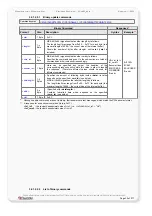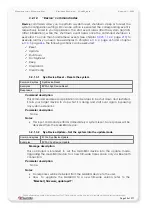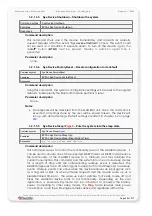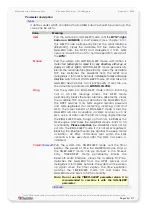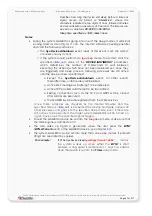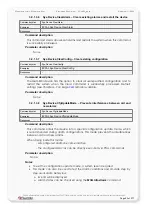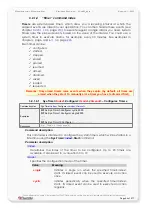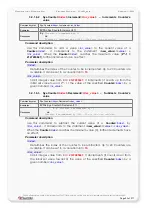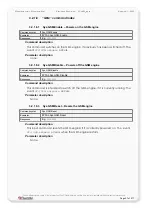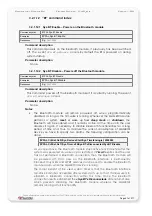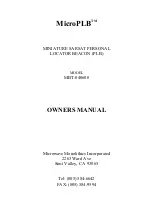
C
ONFIGURATION
C
OMMAND
S
ET
- F
IRMWARE
R
EVISION
2.4.0_
BETA
-
V
ERSION
1.0.0
3.2.1.4.8
Sys.Timer<
index
>.Erase – Erases Timer settings
Command syntax
Examples
$PFAL,Sys.Timer
0
.Erase
Responses
E.g.
$Timer 0 erased
Command description
This command erases the configuration of the defined system timer. If the timer is
running, it stops its execution immediately. The
Timer
is no longer in use. To
activate it, it must be reconfigured and then started.
Parameter description
<index>
Determines the index of the timer to be erased. Up to 20 Timers are available. It
can be set to a value from
0
to
19
.
3.2.1.4.9
Sys.Timer<
index
>.Save<
storage_index
>– Saves Timer state to Storage
index
Command syntax
Sys.Timer
Examples
$PFAL,Sys.Timer
0
.Save
0
Responses
E.g.
$Timer 0 saved
Command description
To save the state of a
Timer
> ,
use this command. This command overwrites
the contents of the
(if not empty).
Parameter description
<index>
Determines the index of the timer to be saved. Up to 20 Timers are available. It
can be set to a value from
0
to
19
.
<storage_index>
Integer type storage index in the range
0
to
4
. Each storage index is a portion of
FLASH memory in which determined data written on it will be not lost when the
device performs a reset, goes into sleep mode or is turned off. Each storage
index has a fixed size into the FLASH and each of them can be updated with
new data. Read also the description of
given in the table of
abbreviations.
Notes
•
Alias names can be defined for all storage indices by using
ALIAS.STORAGE<
storage_index
>=<
alias_name
>. Read the description of
given in the table of abbreviations.
This confidential document is a property of FALCOM and may not be copied or circulated without previous permission.
Page 48 of 271


